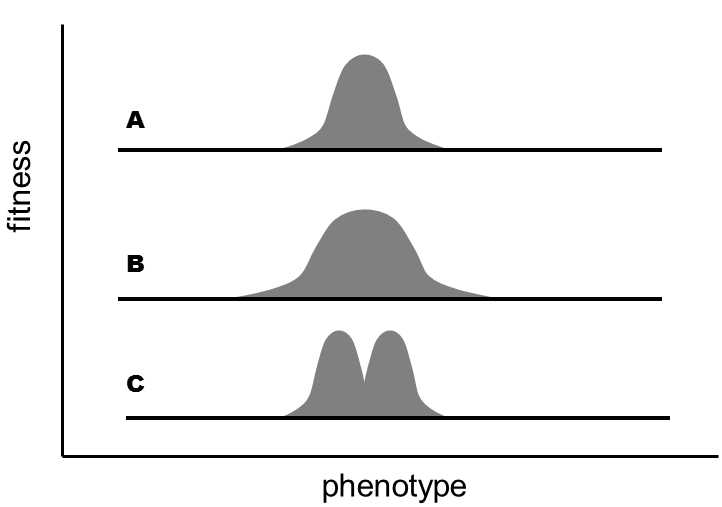XXVI.2.1 The likelihood of speciation can be enhanced by an anagenetic change opening a new or broadening the existing ecological niche for the members of the species
An anagenetic change can shift or expand the ecological niche of a certain species by making available a new source or making an already existing source more readily available.It should be recalled that a resource need not only be a source of food, but can also be a certain type of cover against predators.If this change both makes a new resource available to its carriers and simultaneously prevents access to the originally utilized resource, intraspecies polymorphism will most probably first occur, so that individuals with the new and old form of the trait will survive in the population next to one another.However, later splitting speciation can occur and the two daughter species will each begin to utilize its own niche.The new niches will most probably have a smaller width than that of the original species; however, the two daughter species will utilize the available resources more effectively than the original unspecialized species.If the utilization of the new resources is not connected with a reduction in utilization of the original resources, there will most probably be a widening of the ecological niche of the original species (Fig. XXVI.3).

Fig. XXVI.3 The effect of a change in the ecological niche on cladogenesis. Modification of the ecological niche can occur as a consequence of anagenetic changes. The scheme depicts a cross-section through the adaptive landscape of a certain species prior to the emergence of a new evolutionary trait (A), after the emergence of a new evolutionary trait that makes a new resource accessible for its bearer, and thus broadens its ecological niche (B), and after the emergence of a new evolutionary trait that makes one resource accessible for its bearer simultaneously makes another resource inaccessible (C). The abscissa corresponds to the values of a certain quantitative trait while the ordinate shows the corresponding fitness. Expansion of the ecological niche (B) reduces the risk of extinction, while the formation of polymorphism (C) increases the probability of speciation.
This can then subsequently affect the progress of cladogenesis, as species with wide ecological niches are not as endangered by extinction as species with narrow ecological niches (see XXII.6.1).
